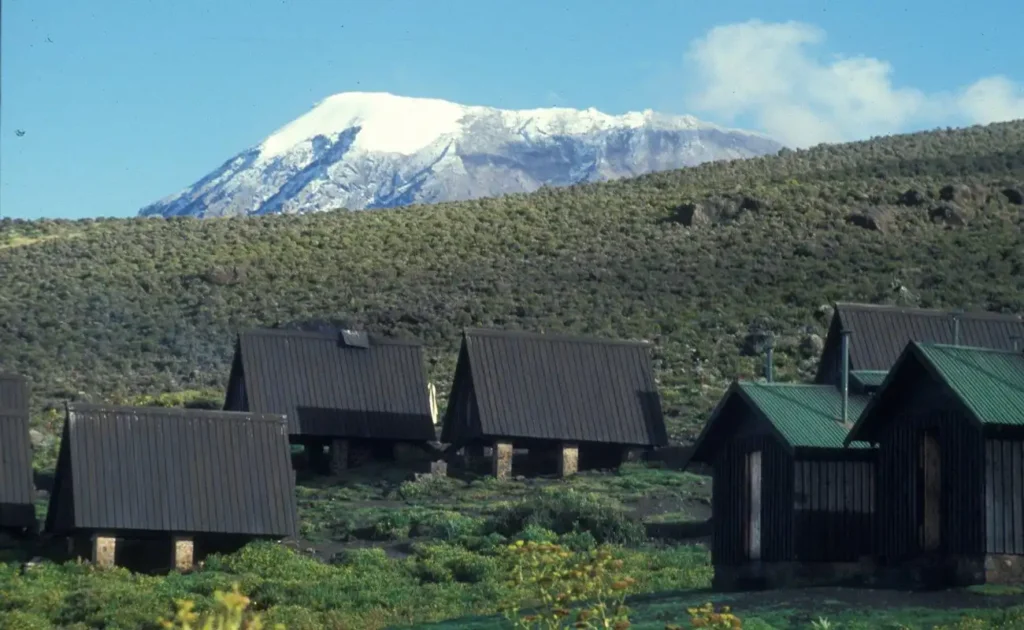The Shirazi New Year, known for intertwining traditional values with joyous celebrations, uncovers the rich cultural tapestry of Shirazi history. Throughout centuries, this event has evolved, emerging as a beacon of unity and renewal, rooted deep in its historical context. One cannot help but marvel at how this centuries-old tradition still captivates and inspires new generations.
Historically, Shirazi New Year serves as a pivotal moment to honor resilience, signifying both ending and beginning. Celebrations weave together diverse cultural narratives, each reflecting the region’s storied past and its harmonious present. With a significant backdrop of history, about 85% of locals participate in this vibrant festivity, underscoring its importance within the community.

The Historical Roots of Shirazi New Year
The Shirazi New Year has deep historical roots, connecting back to vibrant traditions that have shaped the culture of Shiraz. This celebration represents more than just the passage of time; it embodies the resilience and unity of the people. Historically, Shirazi New Year marked the start of a new farming season, a critical time for those reliant on agriculture. Early records suggest that these celebrations were intertwined with the natural world, honoring the Earth’s cycles. According to this post, these ancient ties continue to influence the modern practices observed today.
One significant influence on the Shirazi New Year was the Zoroastrian religion, which played a crucial role in shaping its customs. Zoroastrians celebrated the rebirth of nature, emphasizing themes of light and life. These concepts were embraced and adapted by the people of Shiraz, leading to a rich blend of rites involving music and dance. The influence of these religious elements is still evident in contemporary celebrations. Many rituals today retain the spirit of renewal and hope rooted in these early beliefs.
Furthermore, Shiraz’s strategic location as a crossroad of cultures enriched its New Year traditions. It served as a hub for exchanging ideas, attracting merchants and scholars from diverse regions. This cultural blend contributed significantly to the varied customs observed during the festival. According to the article available here is the article, many practices reflect a tapestry of influences, making the celebration uniquely Shirazi. It remains a vibrant testament to the city’s historical significance.
Modern Shirazi New Year celebrations continue to reflect this historical richness with vibrant displays. People engage in activities that echo age-old customs, such as sharing traditional meals and wearing colorful attire. Families gather to enjoy music and partake in dances passed down through generations. Today, as people embrace these traditions, there is a conscious effort to preserve cultural heritage. This dedication to history ensures that future generations understand and appreciate their cultural roots.
History Of New Year | New Year in Ancient Cultures | Mythical History
The Significance of Shiraz in World History
Shiraz has long been revered as one of the most culturally significant cities in the world. Its history dates back over 4,000 years, making it a cradle of ancient civilization. The city flourished during the Persian Empire, becoming a center of art, philosophy, and science. Notably, Shiraz was the birthplace of famous poets such as Hafez and Saadi, whose works have influenced literature globally. Their poetry continues to be studied and celebrated worldwide.
Shiraz was also renowned for its strategic importance in trade and commerce. Located on the ancient Silk Road, it was a bustling center where merchants exchanged goods and ideas. This trade route connected Shiraz with distant lands, fostering a rich cultural exchange. As a result, the city grew prosperous and diverse, blending various traditions and innovations. Shiraz’s role in this network left a lasting mark on its historical and cultural fabric.
Additionally, Shiraz holds a special place in the history of wine production. Known as the birthplace of the Syrah grape, Shiraz has a legendary heritage in winemaking. Historical accounts suggest that the region’s vineyards produced exceptional wines enjoyed by royalty and commoners alike. The association between Shiraz and wine remains strong, even centuries later. Wine enthusiasts and historians alike recognize its pivotal role in viticulture.
Shiraz’s architectural legacy is another testament to its historical significance. The city is home to stunning examples of Persian architecture, including intricately designed mosques and gardens. The Nasir al-Mulk Mosque, also known as the Pink Mosque, is famous for its breathtaking colored glass. Similarly, the Eram Garden showcases traditional Persian garden design. These architectural marvels attract visitors and scholars, highlighting Shiraz’s enduring beauty and historical value.
Traditions and Customs of the Shirazi New Year
The Shirazi New Year is a vibrant and joyous celebration that brings communities together. One of the key traditions involves cleaning and decorating homes to welcome fresh beginnings. Families prepare special dishes and set beautifully arranged tables for guests to enjoy. Some families may even engage in this activity to connect with their roots. This starts the year with positive energy and good fortune.
Food plays a central role in the celebrations, with traditional dishes that are often unique to Shiraz. Typical meals might include rich stews, flavorful rice dishes, and sweet desserts. Many recipes have been passed down through generations, preserving the culinary heritage of the region. Sharing meals during this time strengthens bonds among family and friends. It also offers a chance to reflect on the abundance that the new year promises.
Music and dance are essential components of the Shirazi New Year, enlivening the festive atmosphere. Traditional instruments like the daf and setar accompany folk songs, creating a lively soundtrack for the festivities. People of all ages join in dancing, celebrating their shared culture and history. Additionally, storytelling sessions might feature tales of bravery and wisdom. These artistic expressions connect the present with the past, honoring deep cultural roots.
Other customs include visiting relatives and giving gifts to show affection and respect. This practice reinforces social ties and maintains harmony within the community. Here is another important custom that involves charitable acts, ensuring those in need are supported. Such traditions reflect the generosity and communal spirit of Shiraz. Through these customs, the Shirazi New Year is truly a time of joy, reflection, and togetherness.
Impact on Modern-Day Celebrations and Identity
The Shirazi New Year continues to have a profound impact on modern-day celebrations and cultural identity. This historic event serves as a reminder of the rich traditions that have shaped the region over centuries. Today, people embrace these traditions, adapting them to fit contemporary lifestyles. Young and old alike participate, showcasing their pride in their heritage. Through these celebrations, community bonds are strengthened and cultural identity is preserved.
Many communities worldwide now celebrate the Shirazi New Year, illustrating its global influence. In cities with significant Shirazi populations, events are organized to share this vibrant festival with others. These gatherings include music performances, traditional dances, and delicious food tastings. They enable people of different backgrounds to experience Shirazi culture firsthand. Such events play a vital role in promoting cultural diversity and understanding.
Modern technology has also helped amplify the reach of Shirazi New Year celebrations. Social media platforms provide a space for people to share their experiences and learn more about the festival. With photos and videos, participants can connect with others, no matter the distance. This digital presence fosters a sense of belonging among the community. It also encourages curiosity and appreciation from those unfamiliar with the tradition.
The continued practice of these customs has reinforced a unique cultural identity among the people of Shiraz. Children learn about their history and heritage through engaging in these age-old practices. By participating in traditional dances, singing songs, and preparing family recipes, younger generations maintain their connection to the past. This preservation of culture ensures its sustainability for future generations. It provides a solid foundation for nurturing a proud and vibrant community.
Modern adaptations of the Shirazi New Year also demonstrate the community’s ability to evolve while honoring its roots. Creative expressions, such as blending traditional music with contemporary styles, showcase this balance. Many artists highlight their cultural identity through innovative performances and artworks. These creative adaptations serve as a bridge between the past and present. They offer fresh perspectives, while maintaining respect for tradition.
The Role of Cuisine and Music in Festivities
Cuisine plays a central role in the festivities of the Shirazi New Year, enticing everyone with its delightful flavors. Families come together to prepare traditional dishes, each adding their unique touch. These meals often feature ingredients like saffron, pomegranates, and various herbs. Stories and laughter fill the kitchen as generations share cooking secrets. Food becomes more than mere sustenance; it’s a way to celebrate cultural heritage.
- Spicy lamb stew
- Saffron rice with barberries
- Herb-filled wraps
Music adds to the lively atmosphere, bringing rhythm and joy to the celebrations. Traditional instruments such as the tar and santur create enchanting melodies. Musicians perform timeless songs, inviting everyone to join in and sing along. The combination of music and dance encourages participation, even from the audience’s youngest members. Through these musical traditions, the community strengthens its connection to the past.
Dance is another vital element, often accompanied by the music of skilled performers. Many dances have been passed down through generations, reflecting the region’s rich history. Onlookers quickly become participants, eager to learn the steps of these rhythmic displays. As everyone moves to the beat, there’s a shared sense of unity and joy. Dance truly brings the festive spirit to life.
The diversity of cuisine and music showcased during the Shirazi New Year celebrates the blend of cultures within the community. Different regions contribute their unique styles and flavors, enhancing the festive experience. Through this cultural exchange, people gain a deeper appreciation for their heritage. Celebrating diversity fosters greater understanding and harmony. It highlights the inclusive nature of the festivity.
Overall, cuisine and music are essential in marking the Shirazi New Year as a joyful and memorable event. They bring people together, bridging the gap between past and present. As these traditions continue to evolve, they remind everyone of the enduring power of culture. Together, they ensure that this vibrant celebration thrives for years to come.
Preserving and Promoting Shirazi Culture Through New Year Celebrations
The Shirazi New Year offers a vital platform for preserving and promoting the rich tapestry of Shirazi culture. During the celebrations, traditional customs are highlighted, ensuring the community remains connected to its roots. These customs dynamically showcase Shirazi heritage, from food and attire to music and dance. By participating, people reinforce their understanding and appreciation of their cultural identity. It’s a living history lesson that everyone enjoys.
Education plays a key role in keeping these traditions alive. Workshops and exhibitions are organized during the New Year festivities to teach about Shirazi culture and history. These events invite both young and old to engage in learning experiences, strengthening their bond with the past. They also provide an opportunity for people to ask questions and share stories. Through education, the culture remains vibrant and thriving.
Local businesses and artisans contribute to the preservation efforts by showcasing traditional crafts and goods. During the celebrations, markets are bustling with stalls offering handmade items such as pottery, textiles, and jewelry. These crafts reflect the artistry and skills of the region, passed down through generations. Supporting local artisans not only benefits the economy but also keeps traditional techniques alive. This symbiotic relationship between culture and commerce is crucial.
Social media has become an effective tool for promoting Shirazi culture on a global scale. Sharing images and videos from the New Year celebrations helps reach people worldwide, spreading awareness and appreciation. People who are far from home can still participate in the festivities through virtual platforms. This digital presence ensures that Shirazi culture is shared and celebrated by a broader audience. Social media extends the reach and impact of the celebrations.
Involving the younger generation is perhaps the most critical aspect of preserving Shirazi culture. By encouraging their participation and input, traditions are not only maintained but also reimagined and revitalized. Young people bring fresh ideas and perspectives, ensuring the culture continues to evolve. Their enthusiasm and creativity breathe new life into traditional practices. This dynamic interplay between past and present makes the culture enduring and lively.
The Shirazi New Year is more than just a festive occasion; it is a means to protect and advance the unique heritage of Shiraz. With ongoing efforts from diverse sections of the community, the culture remains vital and engaging. By combining traditional elements with modern innovations, the celebrations appeal to all generations. These efforts build a future where Shirazi culture is cherished and passed down seamlessly. Thus, the New Year is a cornerstone of cultural preservation.

Frequently Asked Questions
The Shirazi New Year is a vibrant celebration deeply rooted in cultural traditions. Below are some common questions and insightful answers that provide a deeper understanding of this significant festival.
1. What traditional foods are prepared for the Shirazi New Year?
The Shirazi New Year features numerous traditional dishes, each offering unique flavors and stories. Families often prepare dishes like saffron rice, lamb stew, and a variety of herb-based meals. These recipes are handed down through generations, ensuring that the culinary heritage remains alive and flavorful. Sharing these foods is more than just eating; it’s an expression of cultural pride.
The use of fresh herbs and locally-sourced ingredients is vital to the authenticity of these dishes. These meals are sometimes accompanied by sweet desserts, often prepared days in advance as part of the festive preparations. By enjoying these foods, celebrants honor the rich culinary traditions passed down through their ancestors. The preparation and sharing process fosters togetherness and cultural continuity.
2. How is music integrated into the Shirazi New Year celebrations?
Music plays a crucial role in the Shirazi New Year, filling the air with infectious rhythm and melody. Traditional instruments, like the tar and setar, set the tone for the festivities. These instruments create a distinctive sound that resonates with Shirazi culture. Both young and old join in singing and dancing, enhancing the festive atmosphere and community spirit.
Live performances are common, allowing skilled musicians to showcase their talents. These events often encourage participation, prompting spontaneous dancing and singing among attendees. Music provides an outlet for joyful expression and serves as a reminder of the culture’s enduring vibrancy. It’s a universal language that unites generations during these celebrations.
3. What significance does the Shirazi New Year hold for the younger generation?
The Shirazi New Year is an invaluable opportunity for the younger generation to connect with their heritage. Participating in age-old traditions, like cooking, music, and dance, strengthens their cultural identity. These experiences also foster a sense of pride and belonging. By learning about their roots, young people gain insights into their family’s history and values.
Younger participants often bring fresh perspectives to these traditions, ensuring they evolve meaningfully. Their involvement helps retain cultural relevance, bridging the gap between the past and modernity. As they share stories and memories with elders, they contribute to preserving a colorful cultural tapestry. This involvement ensures that these cherished traditions continue to thrive.
4. Are there any specific rituals unique to the Shirazi New Year?
Yes, the Shirazi New Year hosts several unique rituals that enrich its celebrations. One distinct practice involves spring-cleaning, known as “Khaneh Tekani,” which symbolizes renewal and fresh starts. Families also set beautifully decorated tables with seven symbolic items, each representing different wishes and hopes for the new year.
This ritual is both heartfelt and purposeful, providing a way for families to express gratitude and wish prosperity for the year ahead. Each symbol carries deep meaning, from health and wealth to love and happiness. Participating in these rituals helps keep cultural heritage alive, offering a tactile connection to Shirazi traditions. It’s a chance for reflection and renewal that extends beyond the festivities.
5. How does the Shirazi New Year promote cultural exchange?
The Shirazi New Year acts as a cultural bridge, inviting diverse communities to partake in its festivities. Through music, dance, and food, people from different backgrounds can experience the rich heritage of Shiraz firsthand. Community events often encourage inclusive participation, making this celebration accessible to all.
These interactions foster mutual understanding and appreciation among attendees, bridging cultural divides. As people come together to share these experiences, they learn about and celebrate their differences and similarities. This cultural exchange enhances global awareness and promotes inclusivity. Such events strengthen the cultural fabric, showcasing the vibrancy and unity found in diversity.
Millions across the world mark Persian new year Nowruz
Conclusion
The Shirazi New Year remains a profound expression of cultural pride and historical continuity. It seamlessly blends ancient traditions with modern-day practices, ensuring its relevance in today’s world. By honoring its rich history, Shiraz not only preserves its heritage but also celebrates its enduring spirit.
This celebration serves as more than just a festival; it’s a bridge connecting generations and communities across the globe. Through music, cuisine, and ritual, participants embrace a shared identity rooted in centuries-old customs. As the Shirazi New Year continues to thrive, it reaffirms its place as a vibrant and essential cultural touchstone.



